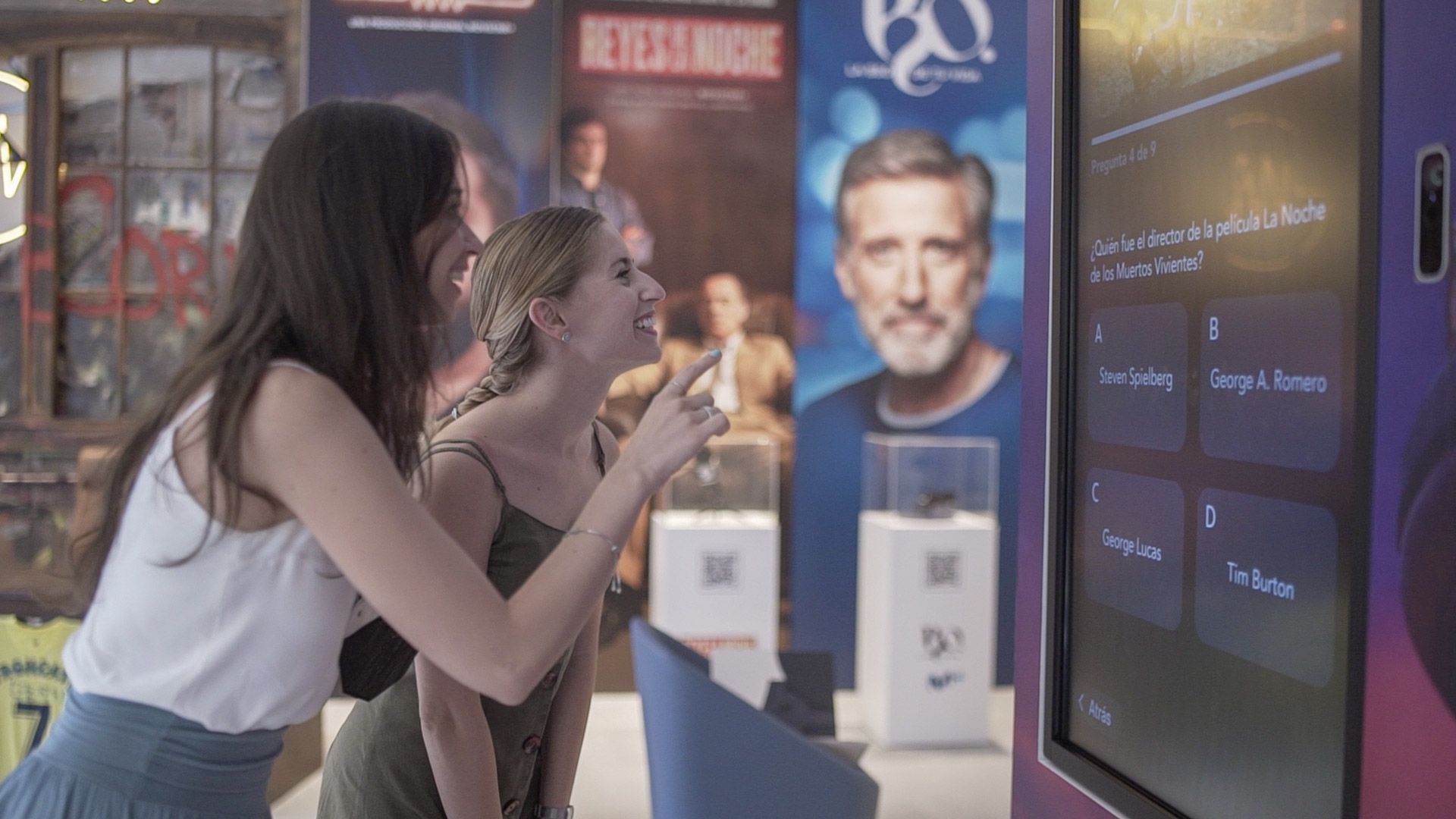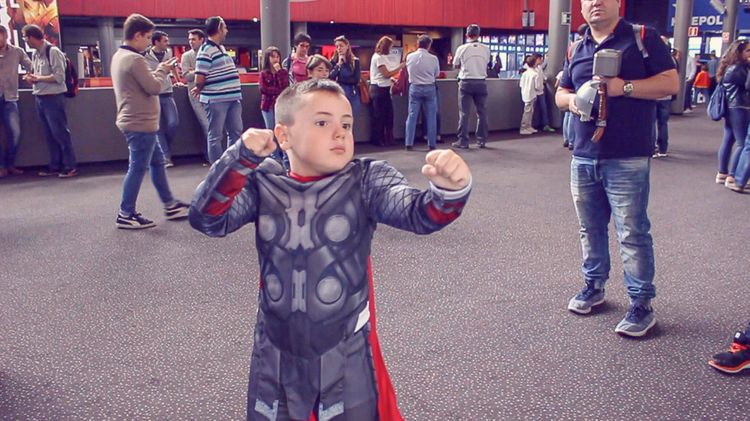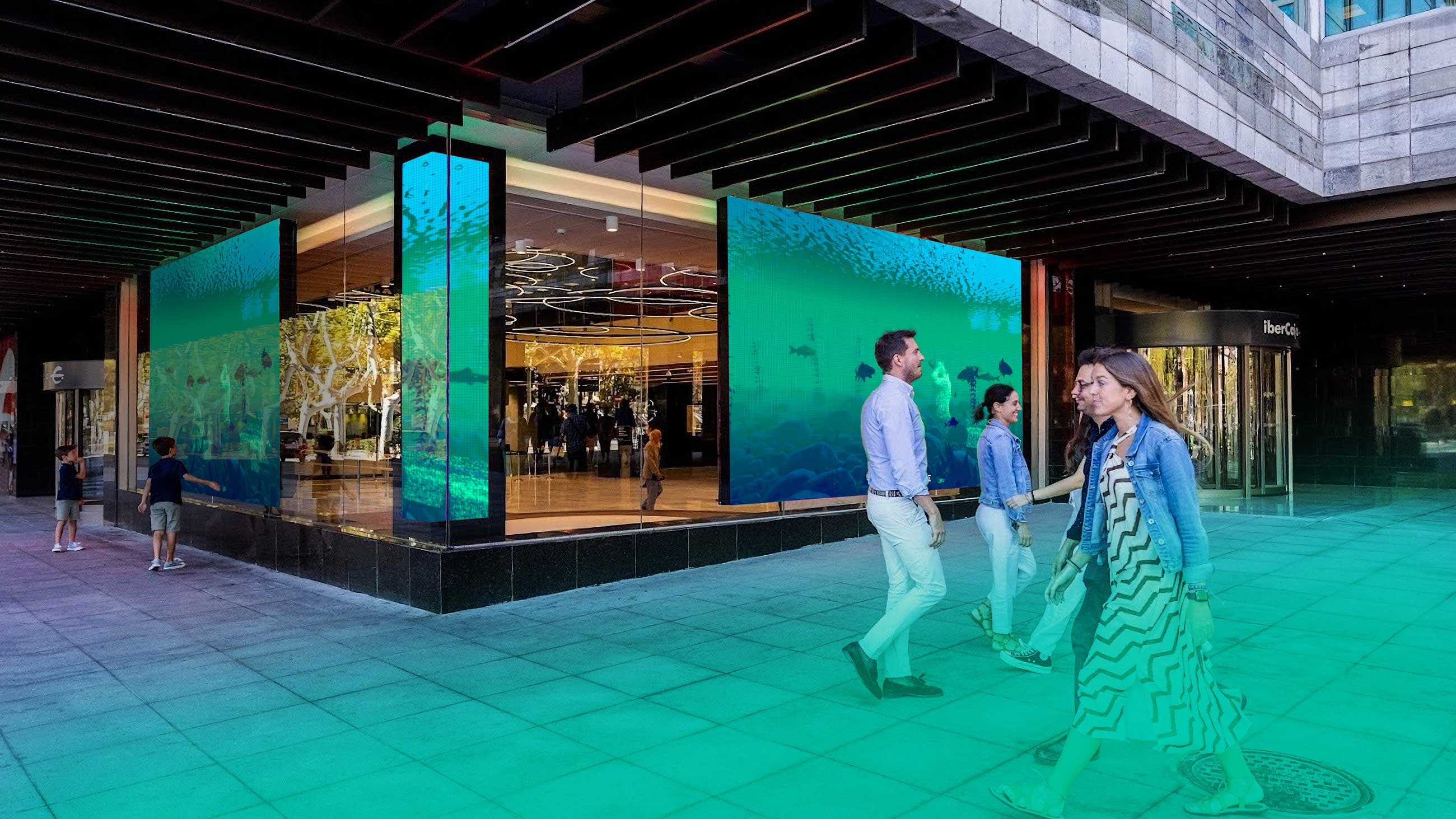How experiential marketing revolutionizes interaction with the public
In a world saturated with information, major advertising campaigns and impacts, the experiential marketing has become the key for brands to not only be seen, but to be seen by their customers. heartfelt. This strategy transforms traditional interaction into unique and emotional experiences that create a lasting connection with consumers.
Through technologies such as Augmented Reality, Virtual Reality y gamificationbrands have the power to surprise, connect and captivate their audiences in innovative ways.
In this blog article, we show you how Imascono has supported disruptive experiential marketing campaigns such as Kimchi!, Thor, Frozen Emotion, Aquarium Experience: Spatial Computing and Turrón, the virtual avatar of the Outlet Tower.
These examples show that immersive experiences and new technologies not only impact, but rather establish authentic and memorable relationships between the public and the brands. Empowering the creativity of the teams of marketingIt's time to discover how experiential marketing can take your brand to new heights!
The evolution of experiential marketing in the digital era
Experiential marketing has evolved from a one-off strategy to become the heart of the connection between brands and consumers.. In today's world, where attention in the digital age is fleeting, presence plays a key role. Consumers seek to live experiences, connect with brands and, above all, connect with the community of users that gathers around them.
And in this return to face-to-face, experiential marketing, what role does technology play? Technology does not replace physical marketing actions, it enriches and enhances them. at fuse the best of both worlds. Providing the physical environment with the ability to analyze and measure both digital and in-person marketing strategies. Obtaining relevant data such as dwell time, visitors' contact email and the number of impacts per hour and day.
You may be interested in → Augmented Reality in advertising with interactive content
Nowadays, experiences are no longer limited to physical events, but combine the real and the virtual thanks to technologies such as Augmented Reality, the Artificial Intelligence and virtual worlds.
This is where Imascono makes the difference. Through immersive and interactive digital experiences, we take experiential marketing to another level, transforming the way brands relate to their audiences. We create realities that excite, surprise and generate deep connections, making every interaction unforgettable. In a world of infinite supply, the key to success is not only what you sell, but the experience you create.
Types of experiential marketing: featured technology
The integration of advanced technologies is revolutionizing experiential marketing, enabling brands to connect with consumers in innovative and exciting ways. In this section, we will highlight some of the most impactful technological tools. Focusing on how technology is improving interaction, engagement and personalization of different experiential marketing strategies.
Augmented Reality and Virtual Reality
Both Augmented Reality and Virtual Reality are revolutionizing experiential marketing by incorporating interactive elements in physical spaces (and also in the digital world). These immersive technologies make it possible to transform shop windows, photocalls, testers and AR filters into experiences that invite consumers to actively interact.
In addition, the large digital installations and interactive gymkhanas offer new experiential proposals that increase engagement, generating an emotional connection that goes beyond just capturing attention..
Immersive events
Immersive events combine technology, creativity and emotionimmersing the public in complete sensory experiences that go beyond the traditional. These events allow participants to experience a unique narrative, whether in a physical or fully digital environment.
For example, through virtual spaces, such as Exclusiversethat allow brands to creating online communities where users can interact and feel part of a unique experiencegenerating a strong sense of belonging. Or even through hybrid events, such as the Halloween campaign by Foster's Hollywoodwhere, through the users' cell phones, the restaurant became a haunted house where creepy creatures were hiding.
Gamification and interactive storytelling
Gamification turns interaction with the brand into an exciting game, while interactive storytelling enables consumers to living the brand from a unique perspective. By integrating playful and challenging elements into campaigns, brands invite users to actively participate by unlocking exclusive content or accumulating rewards.
This approach not only entertains, but also generates a sense of belonging and an emotional connection to the brand. The interactive storytellingThe campaign, on the other hand, allows consumers to experience a unique story in the first person, making them the protagonists, as in the campaign carried out by Kinépolis Cinemas and the Marvel team for the premiere of Thor Ragnarok.
New trends in experiential marketing
Experiential marketing continues to evolve, adapting to the demands of an increasingly demanding and digitized audience. New trends are incorporating innovative technologies, such as Extended Reality, Artificial Intelligence and gamification, to create more immersive and memorable experiences.
In this section, we explore how these trends are transforming the way brands connect with their customers and create unique experiences that transcend traditional marketing boundaries.
Virtual Influencers
Virtual influencers are emerging as one of the most innovative trends in experiential marketing. These virtual avatarscreated by means of Artificial Intelligence and 3D modeling, are gaining popularity among brands looking to connect with younger, tech-savvy audiences. The virtual influencers can interact with consumers through social networks, videos, web or even in Extended Reality environments.
These avatars not only promote products in an attractive and personalized wayThey also allow brands to have complete control over the image and message being conveyed.
Digital Out of Home
Digital Out of Home (DOOH) is revolutionizing advertising by integrating digital displays in public spaces such as shopping malls, airports and subway stations. These interactive screens not only allow static advertisements to be displayed, but also offer dynamic, personalized and real-time content.
In addition, DOOH enables more immersive experiences, such as interactive showcases or digital installations. that invite consumers to participate in games or challenges, generating greater engagement.
Continue reading about this trend in our → post. How extended reality is transforming DOOH advertising.
Gamification
The gamification has become a powerful tool for experiential marketing by transforming brand activities into interactive games with users. By incorporating game mechanics such as rewards, challenges, points and levels, brands are able to engage consumers in an entertaining and participatory way. This trend not only increases engagement, but also motivates users to interact more deeply with the brand.
From mobile apps that allow customers to accumulate points for making purchases to immersive experiences that challenge the consumer to complete challenges, gamification is making brand interactions are more fun, memorable and, above all, unique.
Proximity marketing
Proximity marketing is gaining momentum as leverage geolocation to deliver personalized content to consumers when they are near a particular store, event or space. Using technologies such as Bluetooth or Wi-Fi, brands can send notifications, promotions or relevant information directly to consumers' mobile devices when they are within a close radius of a point of sale.
This type of marketing allows brands to capture the attention of customers at the right time, increasing the chances of conversion.
Live Streaming sales
Live sales are gaining in popularity as a way to interactive and direct way of connecting with consumers in real time. Through live streaming platforms, brands can present products, answer questions, offer demonstrations and provide personalized recommendations while interacting with the audience in real time. This type of sales creates a sense of urgency and exclusivity, encouraging consumers to make quick decisions.
The live interaction allows brands to build a community around their products, generate trust and increase engagement. Live sales, especially on platforms such as Instagram, TikTok and YouTube, are transforming online commerce by offering a more immersive and social shopping experience.
Hyperpersonalization
Hyper-personalization goes beyond simple market segmentation and focuses on deliver brand experiences that are completely tailored to the individual needs, preferences and behaviors of each consumer. With the use of data and advanced technology such as Artificial Intelligence, brands can deliver tailored content, recommendations and offers, creating a deeper bond with their customers.
In addition, AI avatars, functioning as virtual assistants, further personalize customer service, putting a "face" to the essence of the brand. These avatars can provide specific recommendations to users in real time and in any language.The customer's experience is improved and a smoother and more tailored service is guaranteed.
Continue to learn more about this technology in our article → Artificial Intelligence Avatar: definition and main uses
Examples of experiential marketing you should know
Experiential marketing has the power to transforming brand interactions into unforgettable experiencesgenerating deep emotional connections with consumers. Throughout this article, we have analyzed in detail some of the most interesting trends and experiences. Experiences that not only captivate, but also allow customers to live and actively participate in the stories that brands want to tell.
Below, we show you some of the most impactful projects we have developed at Imascono for our customerswhere creativity and technology come together to offer something truly memorable.
- Kimchi! Thor→ In this campaign we took participants directly to Asgard with an immersive Augmented Reality experience, where they could become the characters in the movie and experience the action of Thor: Ragnarok before even entering the movie theater.
- Frozen Emotion→ An exciting and interactive experience based on a challenge: Do you dare to cross a suspension bridge between two peaks of the Pyrenees? It is a Virtual Reality experience enhanced by the physical scenario where users could live all the adrenaline of the mountain from the capital, all to enhance the visit of Aramon ski resorts.
- Nougat→ La Torre Outlet's last Christmas campaign had a special guest, Turrón, the mall's virtual mascot. This AI avatar guided visitors through La Torre Outlet, offering personalized recommendations and being the bridge between their wish list and Santa Claus. A virtual assistant also designed for use by children, thanks to its parental control and storytelling function.
- Ibercaja Xplora→ As part of its brand positioning campaign, Ibercaja has remodeled its headquarters, transforming the interaction with the bank both inside and outside the building. Specifically, in its main corner, it has prepared a whole Digital Out Of Home technological installation, where the projected contents interact with passers-by.
If you are ready to take your brand and your marketing campaigns to the next level with unforgettable experiences, Imascono is here to help you. Contact us at y discover how we can transform your ideas into immersive experiences that captivate your audience and leave a lasting impression.






